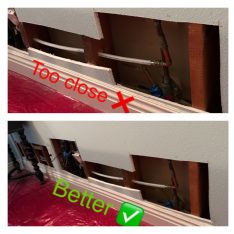Common Drywall Mistakes: Helping Homeowners Avoid Costly Errors
Drywall is a crucial component of any home's interior, but it can also be a source of frustration if not installed or repaired correctly. To help homeowners avoid costly mistakes, let's explore some common drywall errors and how to prevent them.
1. Improper Joint Compound Application
- Over-application: Applying too much joint compound can lead to cracking, sagging, and an uneven finish.
- Incorrect Feathering: Failing to feather the edges of the joint compound can result in visible seams.
- Skipping Sanding: Neglecting to sand between coats can create a rough and uneven surface.
Solution: Apply joint compound in thin coats, feather the edges carefully, and sand between coats until smooth.
2. Nail or Screw Placement
- Incorrect Depth: Driving nails or screws too deeply or shallowly can cause the drywall to bulge or crack.
- Uneven Spacing: Poorly spaced fasteners can weaken the drywall and lead to dimples or bulges.
Solution: Use a drywall screw finder to determine the proper depth, and space fasteners evenly according to manufacturer recommendations.
3. Improper Texture Application
- Uneven Coverage: Applying texture too thick or unevenly can create a bumpy or unsightly appearance.
- Incorrect Tool Use: Using the wrong tool or technique can result in a poor-quality texture.
Solution: Follow the manufacturer's instructions for the specific texture product you're using, and practice on a scrap piece of drywall before applying it to the main surface.
4. Moisture Damage
- Leaks: Water leaks can cause drywall to soften, sag, and mold.
- High Humidity: Excessive humidity can lead to mold growth and damage.
Solution: Address any leaks promptly, ensure proper ventilation, and use moisture-resistant drywall in areas prone to high humidity.
5. Incorrect Priming and Painting
- Poor Primer Adhesion: Using the wrong primer or failing to prime properly can result in peeling paint.
- Over-Painting: Applying too many coats of paint can create a textured or uneven surface.
Solution: Use a high-quality primer specifically designed for drywall, and follow the manufacturer's instructions for application and drying times.
By avoiding these common mistakes, homeowners can ensure a smooth, durable, and attractive drywall finish in their homes. If you're unsure about any aspect of drywall installation or repair, it's always a good idea to consult with a professional.
Perfect Patch - "The Drywall Repair Specialist" - www.perfectpatchoc.com
